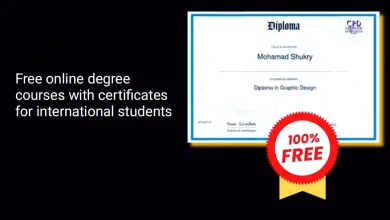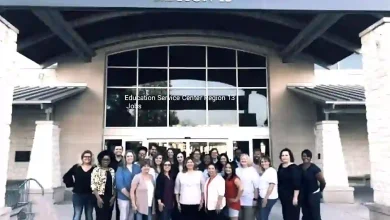Implementing Open Educational Resources: A Guide for Educators
What is Open Educational Resources?
Table of Contents
Open Educational Resources (OER) refers to freely accessible and openly licensed educational materials that can be used, shared, and adapted by educators and students worldwide. These resources include textbooks, lecture notes, videos, interactive modules, and other educational materials that are generally released under licenses such as Creative Commons, which allow users to use, modify, and distribute them without legal restrictions. OER promotes collaboration, accessibility and affordability in education.
10 Open educational resources
Here are ten Open Educational Resources (OERs) that provide valuable learning materials and tools for a variety of subjects and interests:
Khan Academy: A comprehensive platform that offers free video lessons, practice exercises, and personalized learning dashboards for subjects ranging from math and science to arts and humanities.
Coursera: Although some courses require payment, Coursera offers a wide range of free courses from leading universities, providing opportunities to learn from experts in fields such as technology, business and social sciences.
MIT OpenCourseware: The Massachusetts Institute of Technology (MIT) provides open access to their course materials, including lecture notes, assignments, and videos for a variety of subjects.
OpenStax: This Rice University initiative publishes free, peer-reviewed textbooks for college and high school courses, covering physics, biology, economics, and more.
OpenLearn: Run by the Open University, OpenLearn offers free courses, articles and videos on a range of topics from languages and arts to science and technology.
TED-Ed: A platform that offers animated educational videos on various topics, TED-Ed aims to spread knowledge in an engaging and accessible format.
Project Gutenberg: The largest digital library of free e-books, Project Gutenberg offers over 60,000 classic works of literature that can be downloaded or read online.
Codecademy: A popular platform for learning coding and programming languages, Codecademy offers interactive coding lessons for beginners and advanced learners.
Smithsonian Learning Lab: A digital collection of educational resources from the Smithsonian Institution, providing access to millions of artifacts, artifacts, and scientific specimens.
National Geographic Education: National Geographic’s website offers free educational resources including maps, articles, and videos for exploring and learning about the world.
These resources cater to different learning styles and levels, making them valuable resources for self-learners, educators, and anyone looking to expand their knowledge in a variety of fields. Whether it’s academic subjects, professional skills, or personal interests, OERs provide accessible and valuable resources for students worldwide. Always be sure to check each resource’s licensing and terms of use to ensure they adhere to their open access policies. Happy learning !
Importance of open educational resources
Open Educational Resources (OER) are essential for several reasons:
Cost-Effectiveness: OER is freely accessible, reduces financial barriers to education and makes learning resources available to a wider audience.
Increased access: OER promotes inclusiveness and provides access to educational materials for students worldwide, regardless of their location or economic status.
Customization: Teachers can adapt and modify OER to meet their teaching style and the specific needs of their students.
Collaboration: OER encourages collaboration between academics and institutions, fostering knowledge exchange and best practices.
Continuous improvement: The open nature of OER allows for ongoing updates and improvements, ensuring that content remains relevant and up-to-date.
Lifelong Learning: OER supports self-directed and lifelong learning, enabling individuals to acquire new skills throughout their lives.
Global Knowledge Sharing: OER enriches the learning experience for all, facilitating the sharing of knowledge and skills globally.

Overall, open educational resources play an important role in democratizing education and improving the accessibility and quality of learning materials worldwide.
Advantages and disadvantages of open educational resources
Open Educational Resources (OER) refers to freely accessible educational materials that can be used, shared, and modified by teachers, students, and self-learners. These resources include textbooks, lectures, videos, software and other learning materials. OER has gained popularity due to its potential to democratize education and improve learning outcomes. However, like any educational method, it has both advantages and disadvantages. Let’s explore them in detail:
Advantages of Open Educational Resources (OER):
Cost savings: One of the most significant benefits of OER is the cost-saving potential. Traditional learning materials such as textbooks can be expensive, which can place a financial burden on students. OER provides free or low-cost alternatives, making education more accessible and inclusive.
Accessibility and Inclusivity: OER is available globally, breaking down barriers to learning for students from diverse backgrounds and regions. Students who cannot afford expensive textbooks or who do not have access to traditional learning resources can benefit from OER.
Customization and Adaptability: OER allows teachers to customize learning materials to suit their specific teaching methods, student needs, and learning styles. This adaptability increases engagement and effectiveness in the learning process.
Collaboration and knowledge sharing: OER promotes collaboration between academics and institutions. It encourages the exchange of knowledge, experiences and best practices, leading to a richer and more dynamic learning environment.
Continuous Improvement: Because OER can be easily updated and improved, it keeps educational content relevant and up-to-date, ensuring that students have access to the latest information and developments.
Flexibility and Convenience: Students can access OER anytime and anywhere with an Internet connection, providing more flexibility and convenience in their learning journey.
Disadvantages of Open Educational Resources (OER):
Quality Concerns: Because OER is open to contributions from a variety of sources, the quality of content can vary significantly. There may be incorrect or outdated information that can negatively impact the learning experience.
Copyright and Licensing Issues: OER typically uses Creative Commons licenses or other open licenses, which can cause confusion about proper attribution and usage rights. Misunderstanding copyright terms can lead to unintended infringement.
Technological barriers: To effectively access and use OER, students and educators must have access to appropriate technology and Internet connectivity. In regions with limited digital infrastructure, OER may not be as accessible.
Time and Effort for Curation: Educators may need to spend considerable time searching, curating, and organizing OER to meet their specific learning objectives and standards. This curation process can be demanding, especially for those with limited resources.
Lack of interactivity: Some OER may lack interactive elements that encourage active learning and engagement. Without proper design and instructional strategies, OER can feel passive and less effective in supporting deeper understanding.
Sustainability and Longevity: OER projects may face challenges in sustaining themselves over time due to changes in funding, organizational support and contributor commitments.
Open educational resources offer numerous benefits, including cost savings, accessibility, and customization. They facilitate collaboration and knowledge sharing among academics. However, challenges such as quality concerns, copyright issues, and technological barriers need to be addressed for OER to reach its full potential. Despite the difficulties, the ongoing development and improvement of OER can contribute to a more equitable and innovative education landscape in the future.
Use of open educational resources OER in teaching, learning process
Open Educational Resources (OER) refers to freely accessible and openly licensed educational materials that can be used, reused, and redistributed by educators and students worldwide. These resources include textbooks, videos, lectures, quizzes, interactive simulations, and more. Here is a detailed description of their use in teaching and learning process:
Accessibility: OER promotes equitable access to quality education, as they can be accessed without financial barriers. This ensures that students from diverse backgrounds can benefit from the educational content.
Customization: Teachers can modify and adapt OER to fit the specific needs of their students and align with their curriculum. This flexibility allows for personalized and relevant learning experiences.
Collaboration: OER fosters collaboration among academics, enabling them to share best practices, collaboratively develop content, and create a global community of knowledge sharing.
Updates and improvements: OER can be continuously updated and improved by academics and experts, ensuring that the content remains relevant and up-to-date with the latest developments in the field.
Multimodal learning: OER comes in a variety of formats including text, audio, video and interactive elements. It enables a multimodal approach to learning, catering to different learning styles and preferences.
Engagement: Interactive OER can increase student engagement, making the learning process more enjoyable and effective.
Cost savings: Using OER reduces the financial burden on students, as they no longer need to purchase expensive textbooks and materials.
Open Licensing: Open licensing of OER encourages legal sharing, copying and redistribution, fosters a culture of knowledge sharing, and fosters a sense of community.
Lifelong Learning: OER benefits students of all ages and backgrounds, promoting lifelong learning and self-directed learning outside of traditional classroom settings.
Global Reach: OER can be accessed by students worldwide, bridging the gap between developed and developing regions and promoting global knowledge sharing.
Overall, the use of OER in the teaching and learning process has revolutionized education by empowering educators and students, increasing collaboration, and expanding access to quality educational resources. It offers a promising approach to addressing the challenges of traditional education systems and creating more inclusive, accessible, and innovative learning environments.



